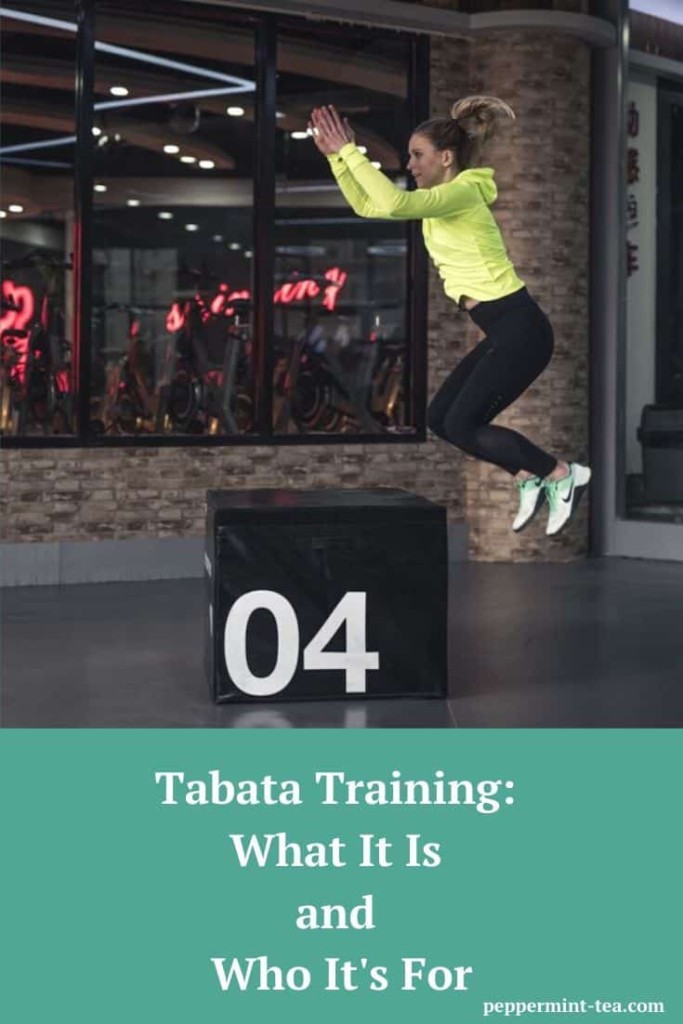Tabata Training: What it Is and Who It’s For

Why Tabata Training May or May Not be Right for Recreational Exercisers.
If you’re into high-intensity interval or intermittent training (HIIT), then you may be familiar with Tabata training. While originally developed (and still primarily intended) for elite athletes, this crazy intense type of workout has hit the mainstream fitness community. It’s being lumped in with the overall idea that you can get the same fitness results with faster workouts than you do with longer ones. Sounds good, right? In reality, it’s not quite that simple. It depends on what your starting fitness level is and what your fitness goals are.
Because there does seem to be so much conflicting information out there about what Tabata training is and who it’s for, I went straight to Tabata training founder and professor at Ritsumeikan University Graduate School of Sport and Health Science Dr. Izumi Tabata, PhD. He graciously answered my questions and helped to shed light on why Tabata training may or may not be right for recreational exercisers.

What is Tabata Training?
Before we go any further, let’s define what Tabata training is. In Dr. Tabata’s April 2019 article, Tabata Training: One of the Most Energetically Effective High-Intensity Intermittent Training Methods1, Tabata training is described as 8 sets of 20 seconds of high-intensity exercise with 10 seconds of rest between the sets. Dr. Tabata specifies that it should exhaust subjects during the 7th or 8th set and that the “Exercise intensity is constant from the first to the last session of the exercise1.”
That makes Tabata training a HIIT method. According to Walter Thompson, PhD, FACSM in his Worldwide Survey of Fitness Trends for 2018 2, “HIIT typically involves short bursts of high-intensity exercise followed by a short period of rest or recovery and typically takes less than 30 minutes to perform3.” What Tabata isn’t though is interval training. That’s where you exercise at low intensity between bouts of high-intensity exercise. Tabata is intermittent training, which, as Dr. Tabata says, is where “Exercisers completely stop the exercise and rest for a while1.”
How Tabata Training is Done
Tabata training takes four minutes to complete and, like other high-intensity interval training, can achieve results when performed at least 2 days a week1. That’s it. Eight sets of intense exercise for 20 seconds each with 10 seconds of rest between each set. This is something that Dr. Tabata was adamant about when I asked him about programs that tout eight-minute, 20-minute or 30-minute Tabata workouts. If it’s more than four minutes, it’s not truly Tabata training – at least as it was originally intended.
What Tabata Training is and Is Not Good For
Dr. Tabata says that Tabata is effective for athletes that need both an aerobic and anaerobic energy supply. Since aerobic means “with air” or oxygen3, aerobic exercises include walking, swimming, running or cycling and involve steady cardiovascular conditioning4. Anaerobic means without oxygen3 and includes activities such as sprinting, high-intensity training or weightlifting.
Some sports, like speed skating, combine both of these energy needs. That’s why Dr. Tabata developed his training – to help these types of elite athletes take their training to the next level and to increase their overall performance. While he fully admits that he does “not know why and how Tabata training attracted recreational users,” he does now believe that his training could be beneficial for a more “normal” exerciser as well as elite athletes. He says that’s because “maximal aerobic power is also a preventive factor for cardiovascular diseases, diabetes and so on.”
One thing that seems fairly clear though is that Tabata is probably not suitable for beginning exercisers. And no matter what the exercise tolerance level, Dr. Tabata strongly encourages anyone over the age of 40 to undergo a medical check before beginning his training method.
Another group that Dr. Tabata does not believe will benefit from Tabata training includes those who are trying to lose weight. He says that none of his subjects lost weight and there have been no scientific articles that reported weight loss through Tabata. He attributes any weight loss that has supposedly been seen as a result of Tabata to the extensive warming up and cooling down exercises that are usually done before and after the training itself. In short, if you’re trying to lose weight, Dr. Tabata says that 60 minutes of running will be far better than his training.
Bottom line
If you’re already in moderately good shape and are used to exercising, Dr.Tabata believes that any type of high-intensity exercise could be used for his training. The key is that the exercise intensity has to be constant throughout the four minutes.
Resources
There are free Tabata timers available online and through apps. The one I like best is the Tabata Timer and HIIT Timer that is available through the App Store.
Sources
- Tabata, I. Tabata training: one of the most energetically effective high-intensity intermittent training methods. J Physiol Sci 69, 559–572 (2019). https://doi.org/10.1007/s12576-019-00676-7https://link.springer.com/article/10.1007/s12576-019-00676-7
- Thompson, Walter. (2017). WORLDWIDE SURVEY OF FITNESS TRENDS FOR 2018 The CREP Edition Apply It. ACSM s Health & Fitness Journal. 21. 10-19. https://www.researchgate.net/publication/322129087_WORLDWIDE_SURVEY_OF_FITNESS_TRENDS_FOR_2018_The_CREP_Edition_Apply_It
- Andrew Hamilton. The Aerobic and Anaerobic Energy Systems. https://www.peakendurancesport.com/endurance-training/base-endurance-training/aerobic-anaerobic-energy-systems/
- 10 Aerobic Exercise Examples: How To, Benefits, and More. https://www.healthline.com/health/fitness-exercise/aerobic-exercise-examples






